The Tech Trader: Mastering Digital Investment Strategies
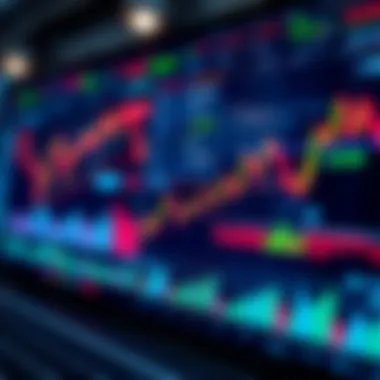
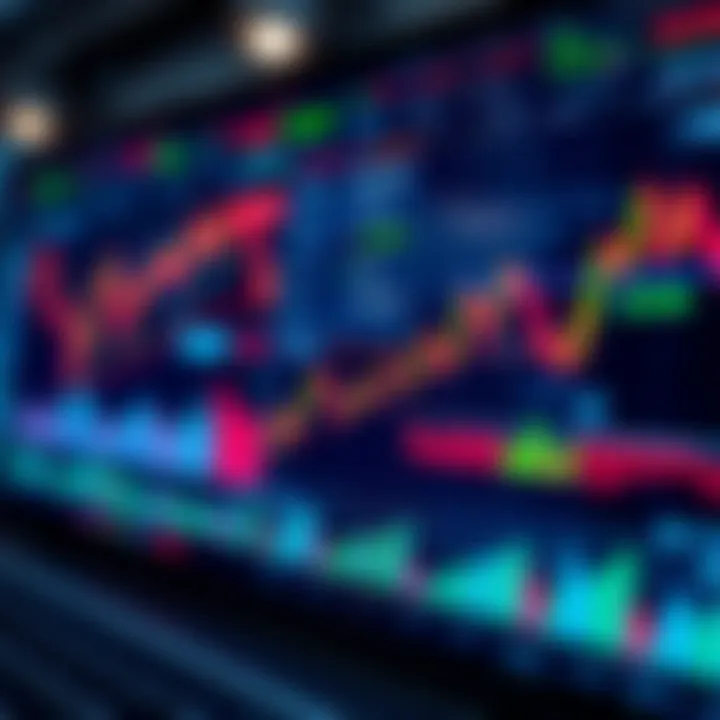
Intro
The world of tech trading stands at the intersection of innovation and investment, presenting a unique landscape that has evolved significantly over the past few decades. As technology continues to transform the way we trade, understanding its nuances becomes essential. This article delves into the heart of tech trading, exploring not only the strategies but also the tools, challenges, and the broader market ecosystem that underpins this dynamic field.
In this journey, we will navigate the complex terminology and concepts that tech traders face daily. Whether you're an experienced investor or just stepping into this vibrant arena, a clear grasp of the foundational elements is vital. From algorithmic trading to blockchain technology, each aspect plays a crucial role in shaping modern investment practices.
Moreover, seasoned investors constantly seek advanced techniques to sharpen their edge. It’s crucial to be in the loop about technical analysis, market sentiment, and emerging technologies that can influence trading outcomes.
As we progress through this article, readers will find insights on:
- Key concepts and definitions that clarify investment terms.
- Expert advice on investment strategies tailored for beginners and pros alike.
- An exploration of essential tools and platforms that facilitate successful trading.
- Challenges faced in the digital investment landscape and how to navigate them.
Each section aims to enrich your understanding and provide actionable knowledge that can impact your trading decisions. Let’s dive into the core concepts that define the world of the tech trader.
Preamble to Tech Trading
In the complex world of investments, technology has emerged as a significant player, redefining how traders approach the markets. Tech trading is not just about buying and selling; it represents a sophisticated blend of strategy, analytical skills, and technological prowess. As the landscape continues to evolve, it’s crucial for traders to grasp the core concepts of this modern trading style. Understanding tech trading offers various practical benefits, such as optimizing returns and managing risk more effectively.
Definition and Scope
Tech trading encompasses the utilization of advanced technology tools and platforms to inform trading decisions. It’s not confined to merely using the internet for transactions; instead, it includes leveraging data analytics, algorithmic trading, and various software applications to enhance the investment process.
"In the age of information, knowledge and speed are the currency of success."
Traders who engage in tech trading must grasp both the tools available and the principles behind technology-driven strategies. This means familiarizing themselves with technical analysis, understanding market trends, and being able to interpret large datasets to make informed decisions. The scope of tech trading is broad, extending beyond just stock markets to include cryptocurrencies, forex trading, and emerging financial technologies.
Evolution of Technology in Trading
The journey of technology in trading has been nothing short of revolutionary. In the past, traders relied heavily on manual processes that required elongated hours of data analysis and an intricate understanding of the markets. Fast-forward to today, and we see a different picture entirely.
The introduction of computers in trading back in the 1960s marked the first significant shift. This was a game changer, allowing for faster transactions and more timely market analysis. With the advent of the internet in the 1990s, trading platforms emerged that enabled individual investors to access real-time data, thus democratizing trading opportunities.
As we move into the current decade, advancements like high-frequency trading (HFT) and artificial intelligence have further transformed the landscape. Algorithms can now process vast amounts of market data in milliseconds, identifying patterns and executing trades at lightning speed. These innovations have led to a more competitive environment. Hence, a tech trader today must not only be knowledgeable but also nimble enough to adapt to the rapid changes that come with technological innovation.
Through this exploration, it becomes evident that the field of tech trading is vital not just for survival but for thriving in today's market. Embracing technology and understanding its evolution is essential for any trader aspiring to make their mark in the investment world.
Profile of a Tech Trader
In the ever-evolving landscape of digital investments, the profile of a tech trader emerges as a crucial element. Understanding what defines a tech trader not only lends insight into the individual’s approach to investment but also illustrates the wider context of trading in a digitized world. The ingredients for a successful tech trader involve a delicate balance of skills, knowledge, and psychological fortitude that empower them to navigate a market that is as volatile as it is rewarding.
Skills and Knowledge Requirements
To thrive as a tech trader, one must cultivate a blend of technical skills and market knowledge. Here are some of the primary competencies:
- Analytical Skills: A tech trader must be comfortable diving deep into data. Being able to interpret market trends and trading volumes can make or break investment decisions. For example, they often analyze historical price patterns and use statistical algorithms to forecast future movements.
- Technical Proficiency: Familiarity with trading platforms like TD Ameritrade or E*TRADE and tools such as trading bots is essential. The tech trader should not only use these tools but understand how they work to gain a competitive edge.
- Financial Knowledge: A grasp of financial concepts and terminologies is a necessity. This includes understanding market indicators, reading financial reports, and staying updated on news that can impact stock prices.
- Risk Management: Knowing how to assess risk is critical. Techniques like stop-loss orders or position sizing are often utilized to manage potential losses while maximizing returns.
By honing these skills, tech traders equip themselves to handle the challenges posed by the fast-paced environment they inhabit.
Psychology of Trading
Personal psychology plays a monumental role in trading. The mental state of a tech trader can significantly influence their decision-making. Here are some psychological aspects to consider:
- Emotional Discipline: The ability to manage emotions is crucial. A trader who can keep their feelings in check during significant market fluctuations is more likely to stay the course and stick to their trading plan. For instance, fear may lead a trader to sell prematurely, while greed can push them to hold onto unprofitable positions for too long.
- Patience and Timing: Having the wisdom to know when to act—be it to sell or buy—is a skill that distinguishes good traders from great ones. This often involves waiting for the right moment instead of jumping on the first tempting opportunity.
- Mindset Resilience: There will be ups and downs in trading, and how a trader responds to losses is just as important as their victories. A good trader learns from mistakes rather than letting them dictate their future actions.
"The market is a cruel teacher; it tests your resolve and often pushes you to the brink of your emotional limits."
Essential Trading Tools
In the realm of tech trading, having the right tools can be the silver bullet that enhances trading performance. Tech traders operate in a fast-paced environment where market conditions can change in the blink of an eye. Therefore, it's essential to leverage a suite of robust tools that provide real-time data, analytics, and ease of operations. These tools essentially form the backbone of any successful trading strategy, allowing traders to make informed decisions quickly and efficiently.
Software and Applications
Software applications in tech trading provide the necessary infrastructure for executing trades, analyzing market trends, and managing investment portfolios. A few notable examples include popular platforms such as Interactive Brokers, ThinkorSwim, and TradeStation. Each of these platforms offers unique features tailored to different trading styles and objectives.
- Interactive Brokers: This platform shines due to its low transaction fees and comprehensive trading tools. It caters to both professional and sophisticated individual investors, facilitating trading across various asset classes.
- ThinkorSwim: Known for its powerful charting capabilities, ThinkorSwim stands out for those who rely heavily on detailed analysis and visualization. It integrates educational resources that make it easier for novice traders to ramp up their skills.
- TradeStation: For algorithmic trading enthusiasts, TradeStation offers powerful scripting tools that allow traders to develop custom strategies. The wealth of technical indicators available makes it ideal for traders with varied technical analysis needs.
Choosing the right software depends largely on one’s trading habits—whether focusing on high-frequency trading or long-term investments.
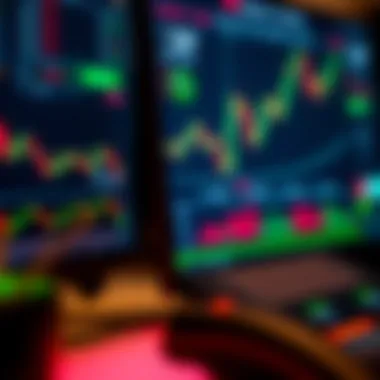

Equally important are mobile applications that allow traders to execute trades from anywhere, keeping them connected to the market around the clock. The convenience offered by mobile trading cannot be overstated. Traders chasing fast-moving stocks often find themselves relying on mobile alerts and trading capabilities to seize opportunities instantly.
Data Analysis Tools
Data analysis is the name of the game in tech trading. Access to high-quality data can distinguish successful traders from their less-experienced counterparts. Utilizing advanced data analysis tools can effectively enhance decision-making, reducing the risks associated with trading.
Key tools in this domain include:
- Bloomberg Terminal: This is often considered the gold standard in financial analytics. Though it's pricey, traders seeking extensive market data, news, and analytics often find it worth the investment.
- TradingView: A more accessible alternative, TradingView offers extensive charting options, social networking features, and a vast library of user-generated content and scripts. It helps traders to analyze data while connecting with others in the trading community.
- MetaTrader 4/5: Primarily used by forex traders, MetaTrader provides automated trading features and strategy development through expert advisors. Its multi-device compatibility ensures traders have no excuse for missing out on crucial market movements.
Data-driven decision-making relies heavily on combining qualitative analysis with quantitative methods. For tech traders, understanding how to interpret market signals through data is a skill that can significantly increase rewards while minimizing risks.
Understanding the importance of essential trading tools not only prepares tech traders to navigate the investment landscape effectively but also empowers them with the knowledge they need to make calculated risks. Investing in the right software and data analysis tools can, indeed, open up a world of opportunities.
Popular Trading Platforms
The realm of tech trading has been vastly influenced by the emergence of robust trading platforms. The right platform can make all the difference in investment strategies and outcomes. It can empower traders with tools that streamline their operations, making it essential to choose one wisely.
One of the primary benefits of using a popular trading platform is the access it provides to a wealth of resources. This includes market data, research tools, and sometimes even integrated social trading features that allow interaction with other traders. Another consideration is the importance of security features; a reputable trading platform typically invests heavily in protective measures to safeguard user information and investments.
Factors like transaction fees, ease of use, and the variety of available investment options can greatly affect a trader’s experience. A low fee structure can save a trader a significant amount in the long run, but it’s crucial to balance cost against the features and ease of use offered.
If you’re venturing into tech trading, it’s paramount to understand what each platform offers. Let's delve deeper into comparing these trading platforms and evaluating user experiences.
Comparison of Trading Platforms
When it comes to selecting a trading platform, a side-by-side comparison can shed light not just on the features but also on how these platforms meet the diverse needs of tech traders. For instance:
- Robinhood vs. E*TRADE: Robinhood has gained popularity due to commission-free trades, which is appealing to beginner traders. However, E*TRADE offers advanced tools ideal for seasoned investors.
- TD Ameritrade vs. Charles Schwab: TD Ameritrade stands out with its Thinkorswim platform, catering to those who favor extensive technical analysis. In contrast, Charles Schwab emphasizes a user-friendly experience with comprehensive educational resources.
Understanding the specific strengths and weaknesses of these platforms can better inform a trader's decision. A good fit can lead to improved trading efficiency and better overall performance.
User Experience and Features
User experience is a critical element in ensuring a trader can utilize a platform effectively. A seamless interface can simplify trade execution and tailor analytics for individual preferences. Take MetaTrader 4, for instance, widely appreciated for its straightforward design and customizable graphics. Traders can adjust charts and indicators to fit their analysis style, promoting quicker decision-making.
Furthermore, some platforms offer unique features that might cater to niche needs. For example:
- Interactive Brokers' tiered pricing model caters well to high-volume traders, while still providing complex tools for derivatives and Forex trading.
- Webull incorporates a social trading aspect, where users can share strategies and insights, enhancing collaborative learning.
"User experience isn’t just a feature; it’s a critical piece in the toolbox of a tech trader that often goes unnoticed."
To truly leverage the capabilities of a trading platform, traders must evaluate their personal trading style against available features. Finding the right platform can serve as a cornerstone for success in today’s cutting-edge trading environments.
In summary, the choice of a trading platform is not merely about selecting a popular name; it’s about aligning one’s trading strategy and user preferences with the features that best support those goals.
Investment Strategies for Tech Traders
Navigating the world of tech trading requires a deft hand and a keen understanding of various investment strategies. Many traders tend to gravitate towards technology due to its dynamic nature, which offers opportunities not typically found in more traditional sectors. This section will delve into two primary strategies: short-term and long-term trading, while also discussing the need for diversification techniques. Each strategy comes with its own set of benefits, challenges, and fundamental principles that are essential to grasp as you chart your course in the digital investment landscape.
Short-Term vs Long-Term Trading
In the fast-moving arena of tech stocks, the decision between short-term and long-term trading often presents itself as a pivotal one. Short-term trading, usually characterized by buying and selling stocks over shorter periods, can offer quick returns. Resourceful traders often use momentum indicators and tech-related news to capitalize on rapid price fluctuations. Think of it like catching a train; if you’re quick enough, you might land a good fare, but if you blink, you could miss it.
However, short-term trading isn’t without its glaring pitfalls. The volatility inherent in tech stocks can lead to swift losses if a trader isn’t careful or doesn’t have the requisite experience. Thus, it can be a bit like walking on a tightrope, where one misstep can send you tumbling.
On the flip side, long-term trading takes a more measured approach. This strategy capitalizes on the overall growth potential of technology companies over extended periods. By holding onto investments through market dips and peaks, long-term traders often find security in the steadiness of compounding returns. It’s akin to planting a seed; with patience and nurturing, that seed can grow into a fruitful tree. Long-term investors often rely on fundamental analysis, examining company performance, earnings reports, and technology sector growth to inform their strategies.
In a nutshell, choosing between short- and long-term trading strategies should align with your risk tolerance, investment goals, and market acumen. Both strategies offer unique routes to success, but they also ask for different levels of commitment and emotional resilience.
Diversification Techniques
Once you have a firm grasp on whether to pursue short- or long-term trading, diversification becomes a focal point for maximizing return potentials while minimizing risks. The phrase “don’t put all your eggs in one basket” rings particularly true in the world of tech investing.
Diversification can be approached in multiple ways:
- Sector Diversification: Spreading your investments across various sub-sectors within tech, such as cloud computing, biotech, and cybersecurity. Each sub-sector can react differently to market changes, which offers a cushion during downturns.
- Geographic Diversification: Investing not only in your local tech companies but also looking to international markets. This strategy can help tap into emerging tech hubs around the globe.
- Asset Class Diversification: Including various asset classes in your portfolio, such as stocks, ETFs, and perhaps bonds that have tech components. This multi-faceted approach can protect your overall portfolio from significant losses.
By implementing these diversification techniques, traders can mitigate risks while opening themselves up to novel opportunities. After all, the tech field is teeming with innovations and trends.
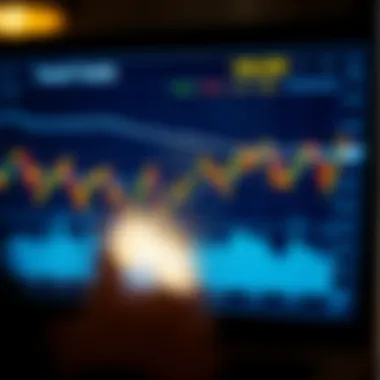
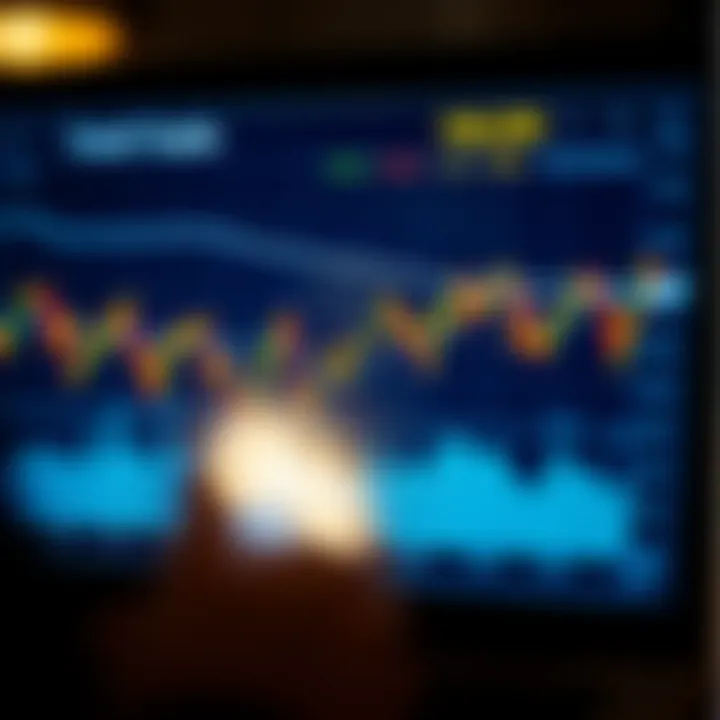
"In tech trading, balance is key. Diversifying your investments can help cushion the blows when the markets turn."
Ultimately, sound investment strategies—whether short or long-term, combined with thoughtful diversification—can create a robust portfolio capable of weathering the whims of the tech market while setting you up for potential gains.
Risk Management in Tech Trading
Managing risk is like walking a tightrope; a misstep can lead to a fall. In the world of tech trading, the stakes are high, and understanding how to manage risks is paramount. Tech traders operate in a volatile environment where technology and market sentiment can shift in the blink of an eye. Consequently, effective risk management protects investments, preserves capital, and maximizes returns. Here’s a look at what it entails.
Identifying Risks
To navigate the stormy seas of tech trading, one must first recognize the potential pitfalls. Risks can be categorized broadly into several types:
- Market Risk: This is the risk arising from shifts in market prices. For tech traders, who often dive into rapidly evolving sectors, this can be particularly significant. A sudden drop in a tech stock due to bad news can take many by surprise.
- Liquidity Risk: Sometimes, a trader may find it difficult to sell an asset without affecting its price. In tech trading, markets can move quickly, and if a trader holds assets in illiquid stocks, they may struggle to exit positions when needed.
- Operational Risk: This includes risks arising from failures in technology, processes, or human error. High-frequency trading, powered by complex algorithms, is particularly vulnerable. A bug in the code could lead to unintended trades that spiral out of control.
- Regulatory Risk: As the tech landscape evolves, so do regulations. Changes in laws or unexpected regulatory actions can significantly impact stock performance. An example is the sudden imposition of data privacy rules affecting tech giants like Facebook.
Recognizing these risks requires continuous market observation and analysis. Therefore, employing tools like real-time data feeds and portfolio management software becomes indispensable.
Mitigation Strategies
Once risks are identified, the next step is formulating strategies to mitigate them. Here are a few tactics:
- Diversification: Like not putting all your eggs in one basket, diversification spreads risk across various sectors or asset types. Instead of solely investing in one tech stock, a trader might allocate funds across semiconductors, cloud computing, and cybersecurity.
- Stop-Loss Orders: This is a fundamental tool for protecting investments. By setting a predetermined price point to sell a stock, traders can limit potential losses. If a stock drops to that level, the order is executed, thereby preventing further loss.
- Position Sizing: Determining how much capital to allocate to a particular trade is crucial. This can be based on the trader’s risk tolerance and the specific circumstances of the trade. For instance, investing smaller amounts in highly volatile stocks can help in managing overall exposure.
- Regular Review and Adjustments: The tech market is fluid, and staying static can be hazardous. Regular assessments of the trading strategy and positions can help identify when to exit or modify positions based on market movements and economic indicators.
"In trading, it’s not just about making money; it's about protecting your capital as well."
Implementing these strategies doesn’t eliminate risk but reduces its impact on a trader's portfolio. Ultimately, a well-defined risk management approach is what separates successful tech traders from the ones who flounder in the tumultuous waters of digital investments.
For more insights on trading risks and strategies, you might check resources like Investopedia, which provides comprehensive articles and guidelines.
Market Trends Affecting Tech Trading
Navigating the complex waters of tech trading requires a keen understanding of the market trends that shape investment strategies. The evolution of technology has created an ever-shifting landscape, making it essential for traders to stay updated. Understanding these trends can empower investors to make informed decisions, reducing risk while maximizing returns. Here, we discuss two key areas shaping the marketplace: technological innovations and global economic factors.
Impact of Technological Innovations
In recent years, the pace of technological advancements has been nothing short of breathtaking. From blockchain to machine learning, innovations are transforming how trading is conducted.
- Automation and Algorithmic Trading: Automation is no longer a buzzword; it’s a necessity. Algorithms can process information in fractions of a second, giving traders an edge. High-Frequency Trading (HFT) firms utilize complex algorithms to execute thousands of trades in a blink. Traders who grasp these technologies can leverage speed and precision.
- Blockchain Technology: The rise of blockchain has the potential to revolutionize traditional trading systems. Security and transparency are enhanced, making transactions reliable. Cryptocurrencies, driven by this technology, have captured the attention of investors worldwide. However, the volatility associated with crypto markets presents both opportunities and challenges.
- Artificial Intelligence: AI is becoming integral in market analysis and predictive modeling. Using vast datasets, AI can identify patterns that humans might overlook. This technological edge can guide traders in developing strategies based on data-driven insights.
"Technological innovations are now the cornerstone of effective trading strategies."
Incorporating these innovations into trading strategies allows tech traders to remain agile, adapting to changes in the market dynamics almost effortlessly.
Global Economic Factors
While tech innovations play a significant role, global economic factors are equally influential. The interaction between these elements can create both risks and opportunities for tech traders.
- Market Sentiment: Economic indicators such as unemployment rates, inflation, and GDP growth significantly affect market sentiment. A positive report on job growth might cause tech stocks to surge, while a downturn could set off a sell-off. Traders need to stay attuned to these trends to position themselves strategically.
- Geopolitical Events: Political stability and trade agreements impact investment decisions. Tensions between countries can lead to uncertainty in markets. For instance, trade wars or sanctions can drastically affect tech companies reliant on international supply chains. Understanding these dynamics allows traders to anticipate market movements effectively.
- Interest Rates: Interest rate decisions made by central banks alter the cost of borrowing and influence investment behavior. Lower rates may encourage borrowing, leading to more capital flowing into tech startups and innovations. Conversely, rising rates can dampen investment enthusiasm, prompting traders to recalibrate their strategies.
The Role of Artificial Intelligence
Artificial Intelligence (AI) has swiftly become a cornerstone of the modern trading landscape. As technology continues to evolve, its integration in financial trading is reshaping how traders analyze data, execute trades, and manage their portfolios. The dynamic shifts in technology compel traders to adapt continuously, making understanding AI's role crucial for navigating today's investment strategies. Largely, AI enhances trading through algorithms that analyze vast amounts of data far beyond human capability, offering insights that can significantly inform decision-making.
AI in Trading Algorithms
Trading algorithms powered by AI leverage machine learning and neural networks to predict market trends and execute trades. These algorithms can digest historical data alongside live market feeds, detecting patterns that would be nearly impossible for human traders to discern. For instance, the algorithm can analyze stock price movements, economic indicators, and even sentiment analysis from social media platforms to predict future price changes.
- Real-Time Processing: AI systems can process trade orders and analyze market data in real-time, providing traders with immediate insights.
- Adaptability: These algorithms learn from previous trades, improving their predictions over time. This adaptability allows traders to remain ahead of the curve, identifying opportunities as they emerge.
Traders utilizing AI in their strategies may find they can operate more efficiently and make decisions backed by data rather than intuition alone. A notable scenario involved firms like Renaissance Technologies, where AI-driven algorithms led to impressive returns, showcasing the effectiveness of these innovations in investment strategies.
Pros and Cons of AI Assistance
While the advantages of AI in trading are numerous, it also carries certain drawbacks that investors should consider.
Pros
- Increased Speed: AI can execute trades in milliseconds, a feat humans cannot match. This capability is particularly crucial in day trading and high-frequency trading environments.
- Emotion-Free Trading: AI removes emotional biases from trading strategies. By making decisions based purely on data, it mitigates the risk of panic selling or greed-driven investments.
- Pattern Recognition: The capacity to identify complex patterns in data can lead to better predictions and more beneficial trades.


"The best part about AI in trading is that it embraces data like an old friend, often ignoring the noise that can lead humans astray."
Cons
- Over-Reliance on Algorithms: Traders may become overly dependent on AI, neglecting essential market factors or personal intuition.
- Lack of Transparency: Some AI models operate as "black boxes," making it difficult for traders to understand why certain decisions are made.
- Market Risks: AI can sometimes react to market changes too quickly or inappropriately, leading to significant losses in volatile conditions.
For more insights on trading algorithms and their impacts, visit Investopedia and the Securities and Exchange Commission.
Legal and Ethical Considerations
In the fast-paced world of tech trading, legal and ethical considerations play a pivotal role. These elements not only ensure fair play within markets but also protect investors from potential pitfalls. Investing in technology requires keen attention to both regulations and ethical standards, since the digital age often blurs the lines between right and wrong.
Regulatory Compliance
Regulatory compliance refers to the adherence to laws and regulations set forth by governing bodies. In financial markets, these rules are established to maintain order, protect consumers, and ensure that all transactions are conducted fairly. For tech traders, understanding regulatory compliance is crucial for several reasons:
- Legal Protection: Compliance helps to safeguard traders from legal repercussions. Violating regulations can lead to hefty fines, penalties, or even criminal charges.
- Market Integrity: Following rules fosters trust in the market, which is essential for its stability. Traders who comply contribute to a fair trading environment, which benefits all participants.
- Reputation Management: Maintaining compliance enhances a trader’s reputation. Being known as a compliant trader attracts investors and partners, which can significantly enhance career prospects.
Traders should keep up-to-date with regulatory requirements set by bodies such as the Securities and Exchange Commission (SEC) in the United States or similar organizations worldwide. This includes understanding Know Your Customer (KYC) regulations, which require traders to verify client identities, and Anti-Money Laundering (AML) obligations that aim to prevent illicit activities.
Ethics in Trading Practices
Ethics in trading go hand-in-hand with regulatory compliance but delve deeper into moral and ethical responsibilities. At its core, ethical trading practices emphasize transparency and integrity. Some key elements include:
- Transparency: Being open about one’s trades and investment strategies fosters trust. Dishonesty or misleading information can lead to a loss of investor confidence, which can be detrimental in the long run.
- Fairness: All traders deserve equal opportunities. Engaging in manipulative practices or insider trading shows a disregard for fair competition and can severely harm a trader’s career and market credibility.
- Respect for Market Participants: Acknowledging the importance of all market players, from casual investors to institutional players, is critical. Collaborations and dealings should take their interests into account, ensuring a balanced approach.
Ethical trading isn't just a personal choice; it shapes the industry's reputation and affects everyone involved. Making the right choice today can lead to a more robust and trustworthy market tomorrow.
Ultimately, understanding and implementing ethical trading practices prepares traders for the challenges of the market. Building a career in tech trading requires not only strategic thinking but also an unwavering commitment to ethics and compliance. By doing so, traders not only protect themselves but also contribute positively to the broader investment community.
Future Outlook for Tech Traders
The landscape of technology-driven trading is transforming at a pace that can hardly be fathomed. As the world becomes increasingly digitized, tech traders are finding themselves in a prime position to capitalize on innovations. Understanding the future outlook for tech traders is not just beneficial; it's essential.
Navigating through this dynamic terrain, traders must keep their eyes peeled for emerging technologies that hold the promise of reshaping practices. Knowing what's around the corner can help investors make informed decisions and adapt quickly, ensuring they don't get left in the dust while the world moves forward.
Emerging Technologies
When we talk about emerging technologies in the realm of trading, we're tapping into a rich vein of potential. For starters, blockchain technology is one of those game-changers; its decentralized ledger capabilities are already shaking up the finance sector. Imagine tracking every transaction in a way that's transparent and secure. This could potentially eliminate many of the inefficiencies and risks tied to traditional trading methods.
Moreover, quantum computing cannot be ignored. While it might seem like science fiction, it's edging closer to reality. The ability to process vast datasets in mere seconds could render conventional computing obsolete. Tech traders using quantum algorithms could predict market trends with astounding accuracy, giving them a significant edge.
Another notable mention is augmented and virtual reality. While they might seem distant ideas, integrating them into trading could lead to immersive trading experiences, allowing traders to visualize complex data in engaging ways. This leads to enhanced decision-making processes.
Potential implications of these technologies include:
- Increased efficiency in trade executions.
- Better analytical tools that make sense of complex datasets.
- Greater security against cyber threats, as trading platforms evolve to face new challenges.
Trends to Watch in the Coming Years
As tech traders look to the horizon, several remarkable trends are beginning to take shape. One such trend is the rise of decentralized finance. This is akin to a financial revolution that decentralizes control from traditional institutions, empowering individual traders instead. Think of it as the wild west of finance, where anyone with an internet connection can participate.
Additionally, social trading is becoming a focal point. Traders are increasingly sharing insights and strategies on platforms such as Reddit and Twitter. This collaborative spirit allows both novice and experienced traders to benefit. The power of community can be a tremendous force in predicting market movements and trends.
Also, we can’t ignore the increasing adoption of Sustainable Investment Strategies. Environmental, social, and governance (ESG) factors are gaining prominence. Investors are keen on trading companies that align with their values, making it a crucial consideration for future tech traders.
As technology continues to evolve, traders mentoring and learning from one another will be fundamental to the landscape of tech trading.
In summary, the future for tech traders is buzzing with opportunities. By embracing emerging technologies and being mindful of evolving trends, traders can position themselves to not only succeed but thrive in this ever-competitive space. The key is to stay adaptable, updated, and engaged with the changes in the investment landscape.
The End
As we wrap up our exploration into the nuanced world of tech trading, it's clear that understanding the breadth of this field is not just beneficial—it's crucial. With technology being the lifeblood of trading today, a solid grasp of both the hard skills and soft skills becomes essential for anyone looking to navigate this landscape successfully. The intricacies discussed throughout this article illuminate how vital it is to keep pace with technological advancements, cope with market volatility, and stay informed about regulatory frameworks.
Recap of Key Insights
Reflecting on the key elements highlighted in this article, several insights stand out:
- Adaptive Strategies: The distinction between short-term and long-term trading reflects the need for versatility. Traders must switch gears based on market conditions.
- Tool Utilization: Understanding the appropriate software and applications enhances a trader's efficacy, blending decision-making with analytical prowess.
- Risk Management: Identifying potential risks is paramount. Traders need not only to recognize them but also to have tailored mitigation strategies ready.
- AI's Role: The integration of AI has redefined trading algorithms. While they streamline operations, awareness of their pros and cons remains essential.
- Ethics and Compliance: Staying above board in trading practices ensures a genuine approach, which is important in building reputability and trust.
"In the digital age, knowledge is more than power; it's the currency of informed trading."
Final Thoughts
Tech trading presents a mélange of opportunities alongside unique challenges. As we look to the future, perseverance and adaptability will be the cornerstones for success. Investors keen on making their mark should harness the insights gleaned from this article to refine their strategies constantly and grow their knowledge base. As markets continue to evolve, so too must our approaches to tech trading. By anticipating trends and embracing innovative tools, one can indeed carve out a niche in this ever-expanding digital investment arena.















